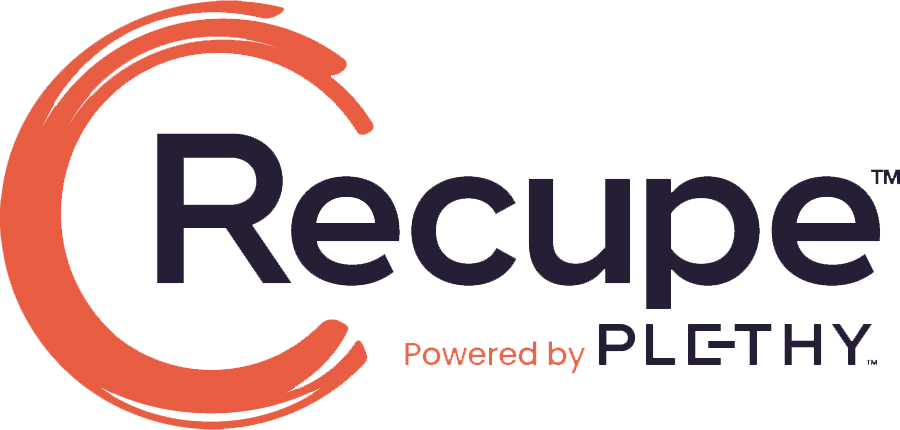WORKERS' COMP THOUGHT LEADERSHIP SERIES
Simple Ideas for a Complex System
Presented by


How Biases Affect Examiners’ Support & Engagement
by Bill Zachry, SCIF Board Member
2004-2024
As the GVP of Risk at Safeway / Albertsons, I was the victim of my biases. Once, when my VP of finance told me that we were overpaying for TD, I told him that our TD was higher due to our wages being higher due to our union contract. Soon after, Alex Swedlow told me we were overpaying the TD after he had analyzed our program. I responded with the same retort. When our VP of managed care said to me that we were paying for TD twice as long as the industry for similar injuries, I realized that I was a victim of my bias and that we were not as perfect as I thought. That resulted in a reformatting of our light and modified duties program at Safeway. I could have saved a lot of money and time if I had listened the first time they told me.
Another bias I carried was egocentric bias—assuming that everyone in the office saw the system and the friction points the same way I did. I regularly fell into the trap of a false consensus effect, expecting people to act on things I believed were obvious. When they did not see it my way, I wondered why they weren’t doing exactly what I believed they should be doing to get better results.
Biases can keep claims examiners from doing the right thing to get the injured worker engaged, or they can also keep the injured worker from becoming engaged in their recovery. It is helpful for us to understand the biases that color our view of the world and appreciate how they can help or hurt us in our efforts to work for the injured workers. Like almost everything, biases can be used for good, or they can be used against you and what you want to accomplish. Understanding how biases work and how they sometimes keep you from seeing the whole picture is the first step to doing better.
🧠 1. Confirmation Bias It’s too easy for an examiner to size up an injured worker early in the claim process and never shift that first impression. Let’s say a worker calls in late to a first appointment or seems unsure when describing the mechanism of injury. The examiner —already managing a heavy caseload and looking for patterns—files this away as a possible red flag. From then on, every piece of information is subconsciously filtered through that initial suspicion: missed call? Avoidance. Slow recovery? Malingering. Requests for second opinions? Manipulation. The examiner may not realize that they are only collecting evidence that confirms their gut feeling—and ignoring facts that challenge it.
Impact: This bias, known as the Confirmation Bias, can lead to reduced empathy and a delay in approving care that could be entirely appropriate. The examiner builds a wall of assumptions, and the injured worker—feeling mistrusted—may disengage or even litigate.
Engagement Tip: To counter the effects of the Confirmation Bias, train examiners to pause and deliberately seek out disconfirming evidence. Encourage them to document what fits their theory and what challenges it. This approach can help them maintain a more balanced perspective.
🎯 2. Fundamental Attribution Error This bias shows up when we misread someone’s actions and assign them to character rather than circumstance. Say a worker snaps at a nurse or misses a follow-up appointment. The examiner may quickly label them as complex or irresponsible. But often, there’s something deeper going on—fear of losing their job, unmanaged pain, or confusion about the process. When we attribute these behaviors to a flaw in personality rather than a reaction to stress, trauma, or pain, we lose the opportunity to offer support that could improve outcomes.
Impact: The examiner’s attitude hardens. Support is replaced by blame. And the injured worker, feeling misunderstood, distances themselves even more.
Engagement Tip: Encourage examiners to pause and ask, “What might be happening behind this behavior?” That slight shift in mindset can change the trajectory of the claim.
🚨 3. Negativity Bias It’s human nature to remember the one negative incident in a sea of neutral or even positive ones. For claims examiners, one difficult phone call, one missed deadline, or one frustrated voicemail can cast a long shadow over an injured worker’s file. We may start expecting the worst from that person, interpreting every action with suspicion, even when they do their best to recover.
Impact: This cynicism can lead to micromanagement and care delays. The examiner might hold back on approvals or double-check everything, not realizing they create more friction.
Engagement Tip: Encourage examiners to reflect on success stories and use case-based learning to reinforce a sense of perspective. Balance matters, especially when trust is on the line.
🧍♂️ 4. Halo Effect / Stereotyping We often allow one trait—positive or negative—to define an entire person. That label can stick if an injured worker is seen as angry or uncooperative early in the process. From then on, every request, delay, or question may be interpreted through that lens. It becomes harder to see progress or effort because the stereotype has taken over.
Impact: This can lead to delayed care, strained communication, and increased litigation. The worker is no longer seen as a whole person but as a problem to manage.
Engagement Tip: Use objective engagement metrics like adherence to physical therapy, General Self-Efficacy scores, or PHQ-8 assessments. These tools give you a more balanced, data-informed view that helps strip away stereotypes and focus on actual progress.
🧩 5. Bias Blind Spot One of the most persistent biases is the belief that bias is something other people have. Claims professionals are trained to be objective, and many pride themselves on fairness. But that pride can create a blind spot. If you don’t believe you have bias, you won’t look for it and certainly won’t challenge it.
Impact: This can lead to rigid thinking and resistance to feedback or improvement. It stalls growth and prevents learning from mistakes. Engagement Tip: Normalize the idea that everyone has bias.
Incorporate bias recognition and reflection into training. Make it safe for examiners to acknowledge where their thinking may need to evolve.
🕶 6. Empathy Gap Claims are often managed under pressure—with limited time, high caseloads, and a strong focus on compliance. In that environment, it’s easy to forget that the person on the other end is in pain, possibly scared, and may not understand what’s happening.
When we underestimate the emotional toll of injury, fear of job loss, or unfamiliar medical and legal jargon, we risk sounding cold or indifferent—even if we don’t mean to.
Impact: That emotional disconnect can shut down engagement. The injured worker feels like just a number, not a person.
Engagement Tip: Train and coach examiners to start every interaction with empathy. A simple “That sounds tough—let’s see what we can do to help” before diving into logistics or documentation can go a long way in building trust.
✅ Enhancing engagement by teaching examiners about bias awareness can improve results.
Bias management skills:
- Understand how biases can impact engagement
- Listen more openly
- Ask better questions
- Build rapport
- Advocate for timely care
- Track progress fairly
- Recognize and Encourage engagement when it takes place
By doing so, examiners become more than just paperwork processors —they become advocates, allies, and trusted guides on the injured worker’s path to recovery. Shifting the dynamic from managing a claim to supporting a person is better for outcomes, it’s simply the right thing to do.


